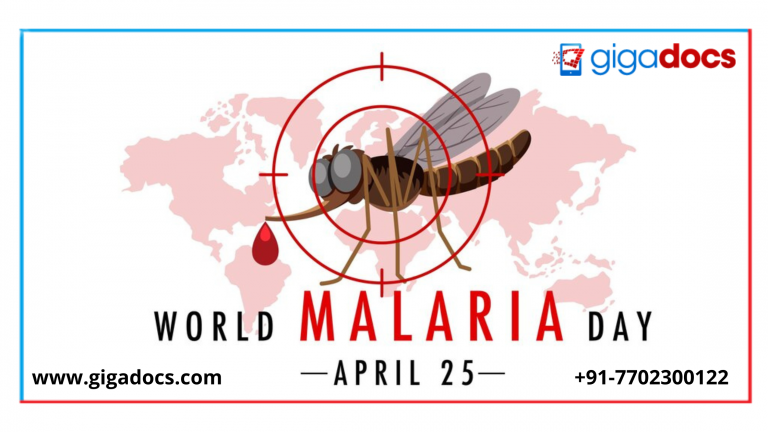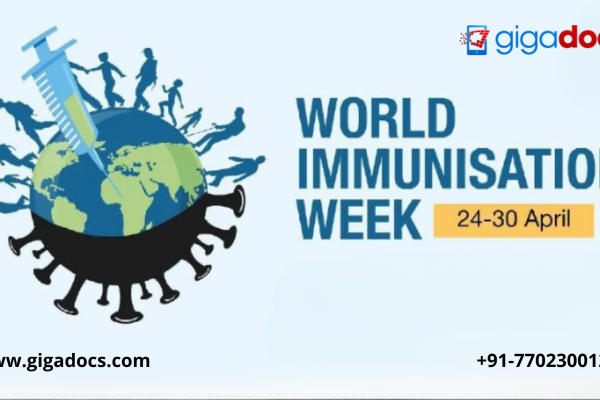Did you know? According to the WHO, South-East Asia Region accounts for about 2% of the burden of malaria cases globally, out of which India is responsible for 79% of cases. Astoundingly, India is home to 15 million malaria cases, with 19,500–20,000 deaths annually.
What do we know about Malaria, one of India’s most dreaded monsoon diseases?
Malaria is a severe and potentially life-threatening disease transmitted to humans by biting the infected female Anopheles mosquitoes. Among the world’s 11 highest-burden countries, India has recorded remarkable improvement against Malaria, according to WHO’s World Malaria Report 2021.
Did you know? India has set a target to eliminate Malaria by 2030.
Why are we speaking of Malaria?
We observe World Malaria Day on the 25th of April. Marking this day, let’s read about the Malaria burden, what are the causes, symptoms, mode of transmission, who are at risk, the complication of Malaria, reoccurrence, diagnosis; and as a concluding part, we discuss how teleconsultation can help in diagnosis and treatment, and how you can book an infectious disease specialist on the Gigadocs app for Malaria treatment and care.
The Burden of Malaria
India has made significant progress in reducing the burden of Malaria over the past decade. The number of cases and deaths due to Malaria has decreased significantly, thanks to the implementation of various interventions, such as insecticide-treated bed nets, indoor residual spraying, and prompt diagnosis and treatment. Let’s read the causes of Malaria below.
Did you know? According to the WHO, South-East Asia Region accounts for about 2% of the burden of malaria cases globally, out of which India is responsible for 79% of cases. Astoundingly, India is home to 15 million malaria cases, with 19,500–20,000 deaths annually.
Malaria Causes
Malaria is caused by the transmission of Plasmodium parasites from infected female Anopheles mosquitoes to humans. The five species of Plasmodium that can cause malaria in humans are-
- Plasmodium falciparum
- Plasmodium vivax
- Plasmodium ovale
- Plasmodium malaria
- Plasmodium knowlesi
When an infected mosquito bites a person, the parasite injects itself into the bloodstream with the mosquito’s saliva. The parasite then travels to the liver, where it multiplies and matures before invading red blood cells. Once inside the red blood cells, the parasites continue to multiply, leading to the rupture of the cells and the release of more parasites into the bloodstream. This process causes fever and other symptoms associated with malaria.
Several factors contribute to the spread of malaria, like environmental and human factors, which include-
- Mosquito breeding: Mosquitoes that carry the malaria parasite breed in stagnant water. Poor sanitation and lack of proper drainage systems can create breeding grounds for mosquitoes.
- Climate: Warm and humid climates are conducive to mosquitoes’ breeding and the malaria parasite’s survival. The disease is most prevalent in tropical and subtropical regions.
- Immune system: People with weakened immune systems, such as young children, pregnant women, and individuals with HIV/AIDS, are at a higher risk of developing severe malaria.
- Lack of access to healthcare: In areas where healthcare is limited, individuals may not have access to preventive measures such as insecticide-treated bed nets or anti-malaria medication, making them more susceptible to the disease.
- Resistance to drugs: Over time, the malaria parasite has developed resistance to certain drugs used to treat the disease, making it more difficult to control and treat.
Malaria Transmission
Not all mosquitoes can transmit malaria, and not all mosquitoes within a given species are infected with the parasite.
Living in areas with high malaria rates can increase the risk of malaria transmission. Malaria can also be transmitted through blood transfusions, organ transplants, or sharing contaminated needles or syringes. In rare cases, it can also be transmitted from mother to child during pregnancy and childbirth.
Malaria Symptoms
Children under 5, pregnant women, and people with weakened immune systems are particularly vulnerable to severe malaria.
The symptoms of malaria appear within 10-15 days after the infected mosquito bite, but it can take up to several months for symptoms to develop in some cases. The symptoms of malaria are similar to those of flu-like illness and may include:
- Fever (often high and spiking)
- Chills and sweating
- Headache
- Muscle and joint pain
- Fatigue and weakness
- Nausea and vomiting
- Abdominal pain and diarrhea
It’s important to note that the symptoms of malaria can vary depending on the type of Plasmodium parasite causing the infection. For example, P. vivax malaria can cause additional symptoms like an enlarged spleen. In severe cases, malaria can cause complications like organ failure, anemia, cerebral malaria, acute respiratory distress syndrome, and in some cases, death.
Malaria Risk Factors
Several factors can increase the risk of malaria infection, including:
- Geographic Location: Malaria is most common in tropical and subtropical regions, particularly in South Asia, sub-Saharan Africa, and parts of South and Central America.
- Mosquito Exposure: Mosquito bites are the primary mode of transmission for malaria. Spending time outdoors during peak mosquito activity (dusk to dawn) or living in areas with high mosquito populations can increase the risk of infection.
- Lack of Immunity: People who live in or travel to areas where malaria is common and have not developed immunity to the disease are at increased risk of infection.
- Poor Housing Conditions: Living in homes without screens on doors and windows or proper ventilation can increase the risk of mosquito bites and malaria transmission.
- Lack of Healthcare Access: Limited access to healthcare or delay in seeking medical care can increase the risk of severe malaria and death.
- Immunosuppression: People with weakened immune systems, such as those living with HIV/AIDS, are at increased risk of severe malaria.
Not everyone exposed to malaria parasites will develop the disease, and the severity of the illness can vary depending on various factors. Taking preventive measures, like taking antimalarial medications, and seeking prompt medical attention for symptoms of malaria, can reduce the risk of infection and complications discussed in the next section.
Complications and Severity of Malaria
Malaria can lead to several complications, particularly in severe or untreated infection cases. Some of the potential complications of malaria include:
- Anemia: Malaria can destroy red blood cells, leading to anemia, a condition where the body doesn’t have enough healthy red blood cells to carry oxygen to the tissues.
- Cerebral Malaria: Malaria can complicate to a severe form of malaria that affects the brain and can cause seizures, coma, and other neurological symptoms.
- Acute Respiratory Distress Syndrome (ARDS): A potentially life-threatening condition that can occur in severe cases of malaria, where the lungs become inflamed and fill with fluid.
- Organ Failure: Malaria can cause damage to the liver, kidneys, and other organs, leading to organ failure.
- Low Blood Sugar (Hypoglycemia): Severe malaria can cause low blood sugar levels, leading to seizures, coma, or even death.
- Pregnancy Complications: Pregnant women contracting malaria are at increased risk of complications such as miscarriage, stillbirth, and premature delivery.
These complications can be prevented or treated with appropriate medical care, including prompt diagnosis and treatment, close monitoring of symptoms, and managing complications as they arise.
How can Malaria Reoccur
Malaria can recur in some people because some species of the malaria parasite (Plasmodium) can hide in the liver and remain dormant for extended periods. When these parasites reactivate and multiply, they can cause disease relapse- this is particularly true for P. vivax and P. ovale, which can remain in the liver in a dormant state for several months to years after the initial infection.
The dormant liver-stage parasites are unaffected by most antimalarial drugs, which only target the blood-stage parasites. Reinfection can occur even in people who have previously had malaria and have developed immunity to the disease, as the immunity can diminish over time.
Preventing malaria recurrence involves taking appropriate preventive measures. People with a history of malaria, particularly those with P. vivax or P. ovale infections, may also need to be treated with medication to prevent relapses.
Malaria Prevention
Let’s prevent Malaria by taking a combination of personal and community-based measures. Some of the effective measures for malaria prevention include:
- Using Insecticide: treated Bed Nets: Sleeping under a bed net treated with insecticide is one of the most effective ways to prevent mosquito bites and malaria transmission.
- Wearing Protective Clothing: Wearing long-sleeved shirts, pants, and socks can help reduce the risk of mosquito bites, particularly during peak mosquito hours.
- Applying Insect Repellent: Applying insect repellent containing DEET can help prevent mosquito bites and reduce the risk of malaria transmission.
- Managing the Environment: Community-based measures such as reducing mosquito breeding sites by eliminating standing water, draining stagnant water, and applying insecticides to breeding sites can help reduce the mosquito population and prevent malaria transmission.
- Indoor Residual Spraying: Spraying the interior walls of homes with insecticide can also help prevent malaria transmission by killing mosquitoes that come into contact with the insecticide.
- Education and Awareness: Let’s raise awareness about the causes, symptoms, and prevention of Malaria this World Malaria Day- this can help promote the adoption of preventive measures and reduce the incidence of the disease.
It’s important to note that no single measure is 100% effective in preventing Malaria, and a combination of several steps, as discussed above, is critical to achieving maximum malaria prevention.
Malaria Diagnosis with Gigadocs
Malaria diagnosis is essential because prompt and accurate diagnosis can help ensure that infected individuals receive timely and appropriate treatment. An infectious disease specialist can diagnose Malaria by analyzing a person’s medical history, physical examination, and laboratory tests. Some of the standard methods used for malaria diagnosis include:
- Blood Smear Test
- Rapid Diagnostic Tests (RDTs)
- Polymerase Chain Reaction (PCR)
Rapid and accurate diagnosis is critical to preventing complications and reducing malaria transmission. Download the Gigadocs App to consult with Infectious Disease specialists and to book diagnostic tests for Malaria.
Download the Gigadocs app from-
- IOS App – apple.co/2W2iG4V
- Android App – bit.ly/33AQoRC
To know more e-mail, at info@gigadocs.com




